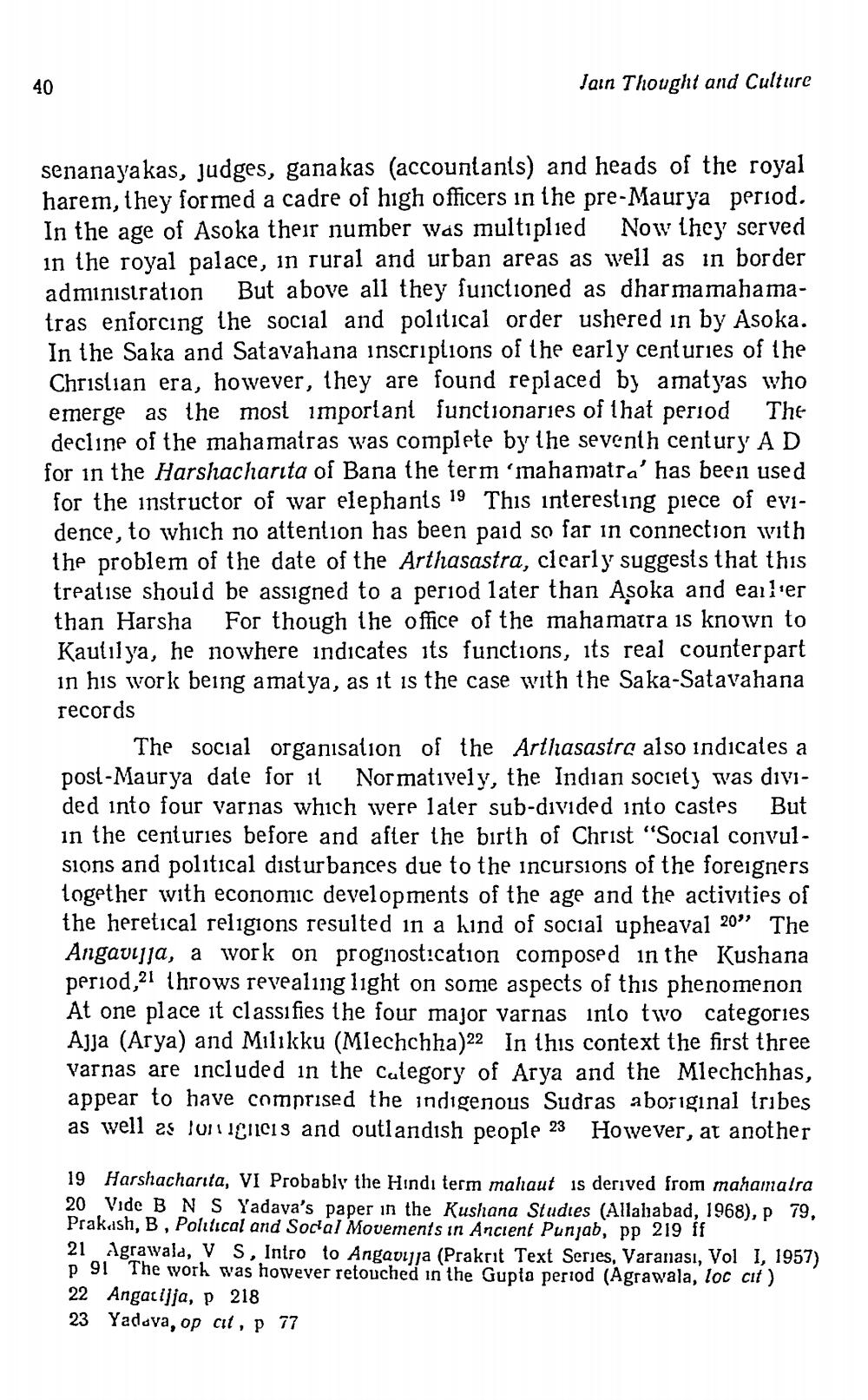________________
40
Jain Thought and Culture
senanayakas, judges, ganakas (accountants) and heads of the royal harem, they formed a cadre of high officers in the pre-Maurya period. In the age of Asoka their number Was multiplied Now they served in the royal palace, in rural and urban areas as well as in border administration But above all they functioned as dharmamahamatras enforcing the social and political order ushered in by Asoka. In the Saka and Satavahana inscriptions of the early centuries of the Christian era, however, they are found replaced by amatyas who emerge as the most important functionaries of that period The decline of the maha matras was complete by the seventh century AD for in the Harshacharita of Bana the term 'mahanatra' has been used for the instructor of war elephants 19 This interesting piece of evidence, to which no attention has been paid so far in connection with the problem of the date of the Arthasastra, clearly suggests that this treatise should be assigned to a period later than Aşoka and earlier than Harsha For though the office of the maha matra is known to Kautilya, he nowhere indicates its functions, its real counterpart in his work being amatya, as it is the case with the Saka-Satavahana records
The social organisation of the Arthasastre also indicates a post-Maurya date for it Normatively, the Indian society was divided into four varnas which were later sub-divided into castes But in the centuries before and after the birth of Christ "Social convulsions and political disturbances due to the incursions of the foreigners together with economic developments of the age and the activities of the heretical religions resulted in a hind of social upheaval 20” The Angauljja, a work on prognostication composed in the Kushana period,21 Throws revealing light on some aspects of this phenomenon At one place it classifies the four major varnas into two categories Ajja (Arya) and Milikku (Mlechchha)22 In this context the first three varnas are included in the category of Arya and the Mlechchhas, appear to have comprised the indigenous Sudras aboriginal tribes as well as On ICICIS and outlandish people 23 However, at another
19 Harshacharita, VI Probably the Hindı term mahaut is derived from mahamalra 20 Vide B N S Yadaya's paper in the Kushana Studies (Allahabad, 1968), P 79, Prakash, B , Political and Sodal Movements in Ancient Punjab, pp 219 If 21 Agrawala, V S, Intro to Angavljja (Prakrit Text Series, Varanası, Vol 1, 1957) p 91 The work was however retouched in the Gupta period (Agrawala, loc cit) 22 Angacija, p 218 23 Yadava, op cit, p 77




